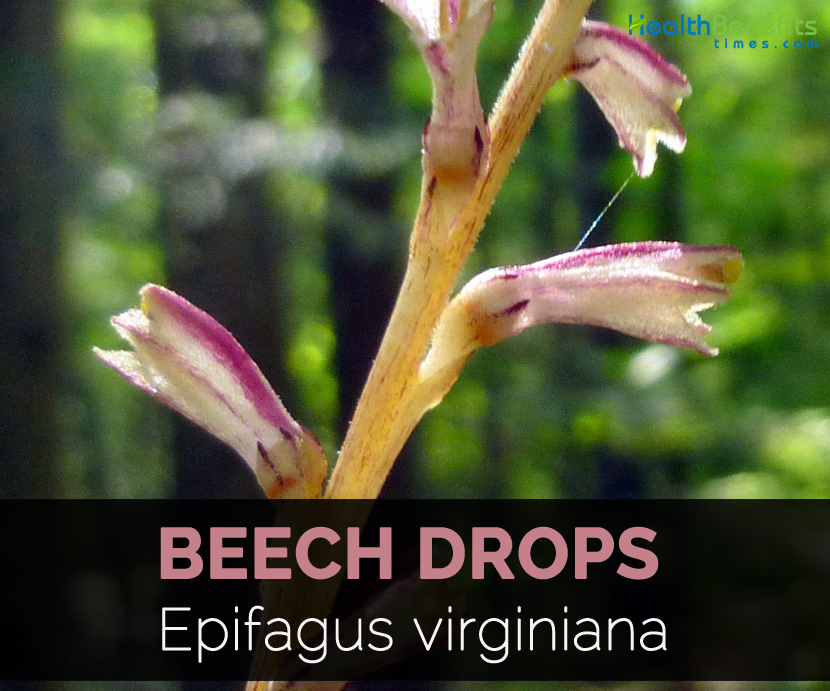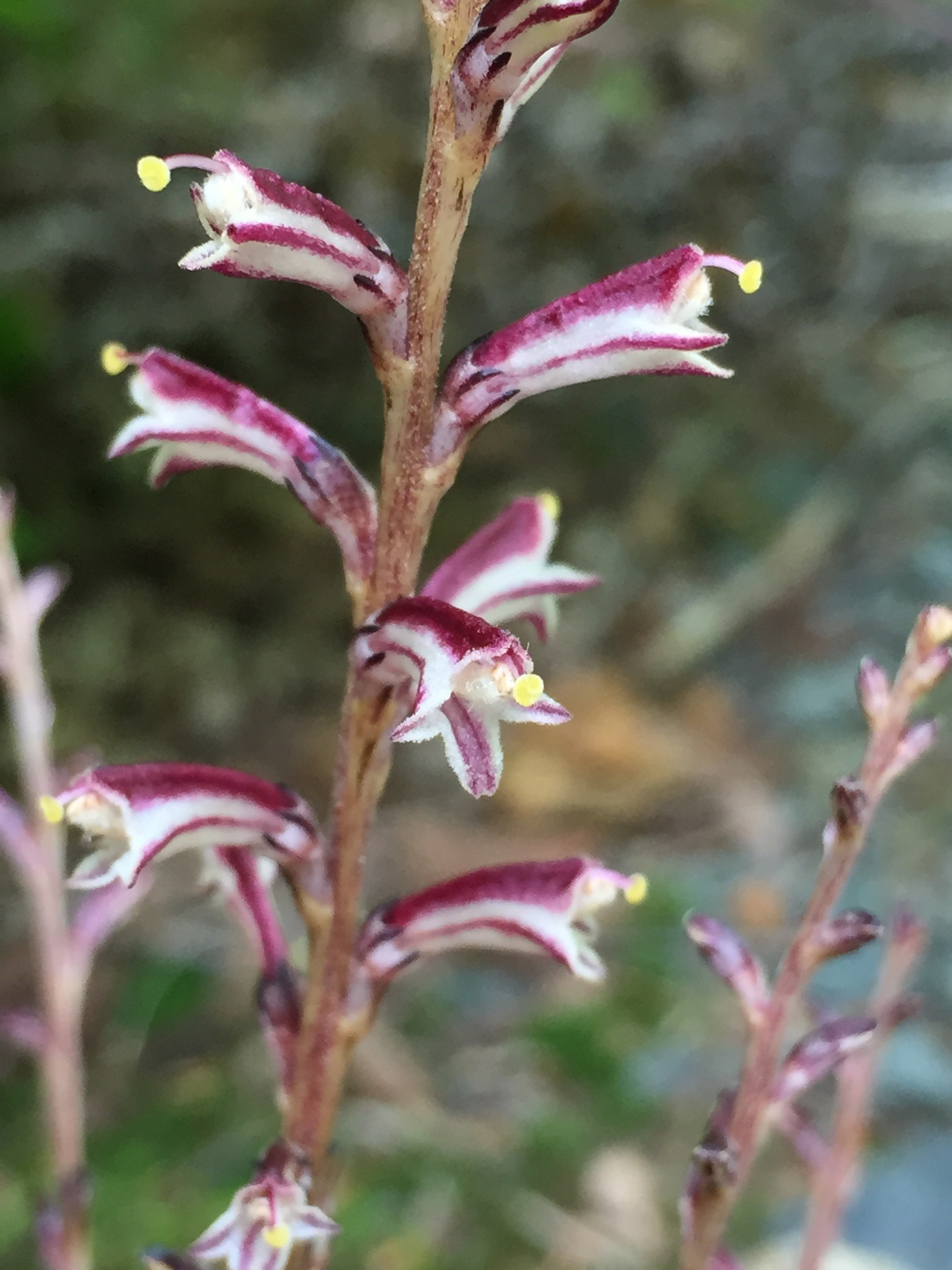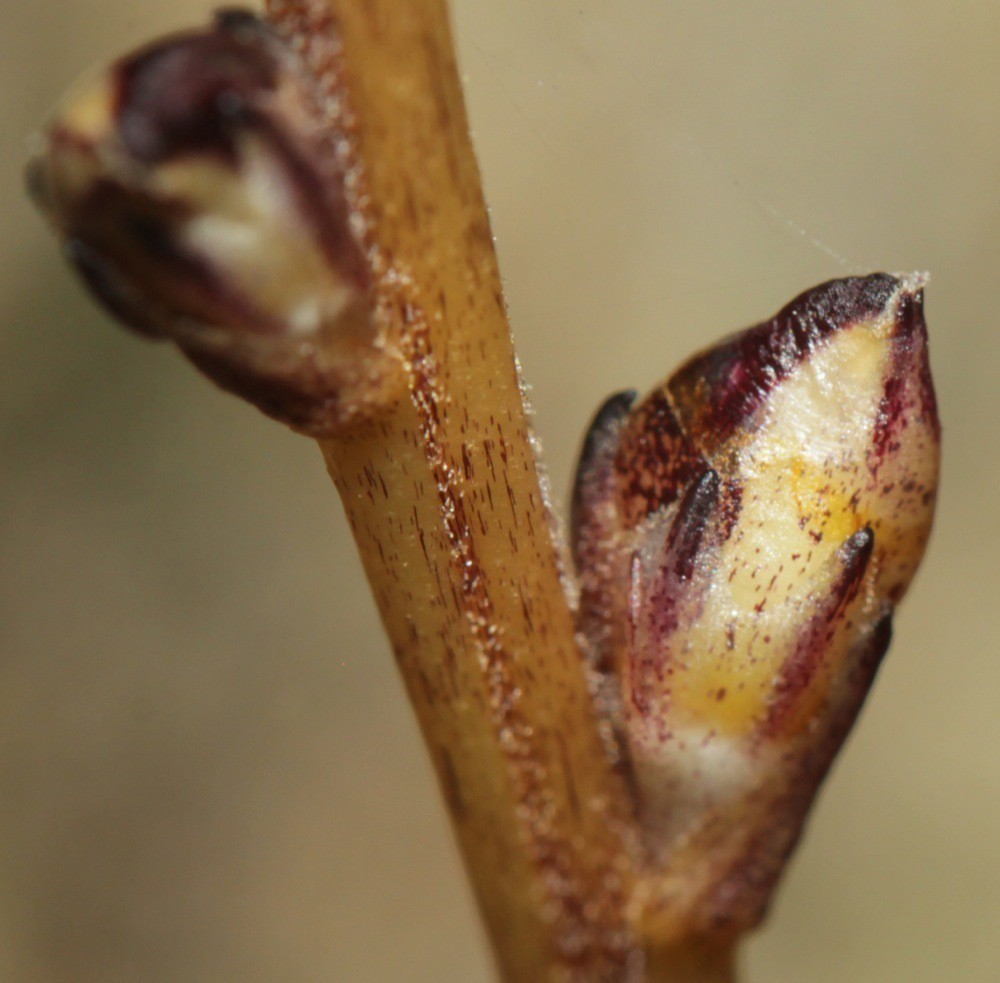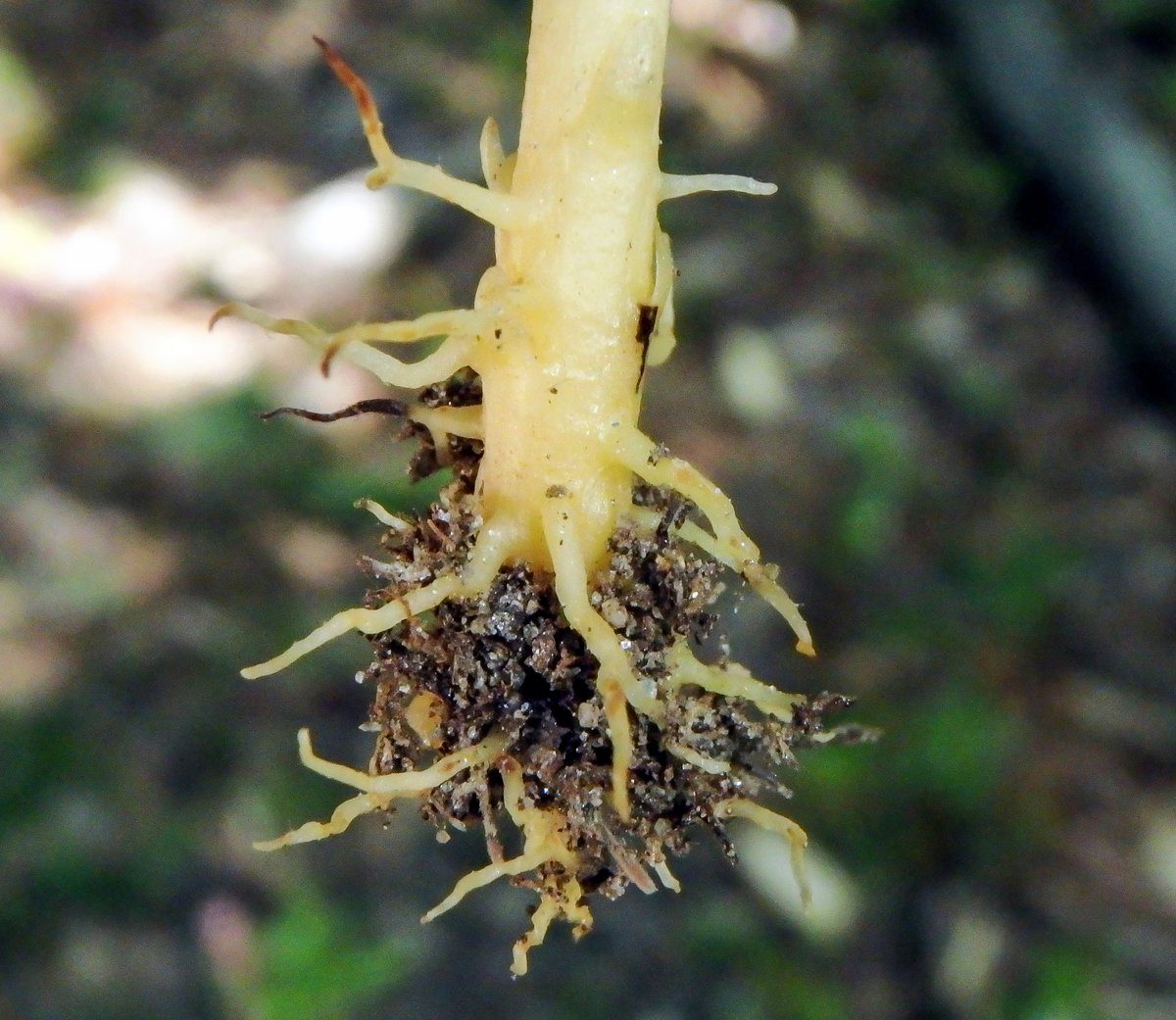| Beech drops Quick Facts | |
|---|---|
| Name: | Beech drops |
| Scientific Name: | Epifagus virginiana |
| Colors | Brown |
| Shapes | Small, ¼ inches |
| Name | Beech drops |
|---|---|
| Scientific Name | Epifagus virginiana |
| Common/English Name | Beech drops , beech-drops, beechdrops |
| Name in Other Languages | English: Beechdrops, Virginia beechdrops; French: Épifage de Virginie In |
| Plant Growth Habit | Obligate parasitic plant |
| Soil | Chalky and sandy |
| Plant Size | 30 cm tall |
| Medicinal parts | Tops, root, stems |
| Stem | Pale brown, dull red, or light brown |
| Flowering Season | Late summer/early fall |
| Flower | Reddish, brown or yellowish, tubular, length 1.3 cm |
| Fruit shape & size | Small, ¼ inches |
| Fruit color | Brown |
Plant description
Beech drops grows to the height of 5 inches to 18 inches. Branches are skinny and tubular with small scale like leaves which are flat pressed against stem. Flowers are tiny occurring singly or in spikes. Flowers are tubular and forms two lip like projections and produce nectar to attract winged pollinators. Flowers bloom from August to October and by the end of November, the plant turns dark brown and brittle. It is used for treating diarrhea, mouth sores, dysentery and externally on cold sores.
Medicinal uses
- It is used for asthma and also helpful for obstinate ulcers of mouth or stomach and diarrhea.
- Use it internally as stimulating expectorant in chronic bronchitis and apply it externally for various skin problems.
- The tea made from fresh plant is used for dysentery, diarrhea, cold sores and mouth sores.
- Apply the poultice or decoction for wounds, ulcers and gangrene.
- Apply the cooled decoction in ulcers, skin disorders and erysipelas.
- Use the tea as a wash.
- The mixture of cherry bark and beech drops are used for treating hemorrhages of bowels.
- In North America, it is used for treating health problems such as dysentery, diarrhea, mouth sores and cold sores.
References:
https://www.itis.gov/servlet/SingleRpt/SingleRpt?search_topic=TSN&search_value=34276#null
https://botanical.com/botanical/mgmh/b/beech-27.html
https://en.wikipedia.org/wiki/Epifagus
https://www.wvdnr.gov/wildlife/magazine/Archive/08fall/Vol8No2msfBeechdrops.pdf
https://www.jstor.org/stable/4032585?seq=1
https://www.gloucesterva.info/DocumentCenter/View/4055/Beechdrops-September-2012-PDF
https://www.ct-botanical-society.org/Plants/view/186
http://www.missouriplants.com/Pinkalt/Epifagus_virginiana_page.html
https://plants.usda.gov/core/profile?symbol=EPVI2
https://www.henriettes-herb.com/eclectic/kings/epiphegus.html
https://elmaskincare.com/herbs/herbs_beechdrops.htm
http://www.tipdisease.com/2015/05/beechdrops-epifagus-virginiana-overview.html





